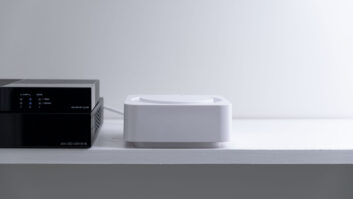In these heady, inflationary times it’s become commonplace to raise prices. Many custom installation businesses have grown accustomed in recent months to increasing labor and merchandise rates each time vendors passed on inflated costs. Some of these manufacturers have levied five or more of these price hikes in the last year, normalizing what used to be an untouchable third rail. The temptation when looking at wage inflation or vendor COGS increases is to just markup the retail price to the customer, preserving your profit margin. That strategy works — to a point.

Eventually, every consumer reaches a point where they refuse to spend more money on something that’s not a daily staple. Where is that point? Good question. People much smarter than me spend their lives evaluating economic price sensitivity (know as “elasticity” in economic circles) and they all seem to give the same “it depends” answer, especially when it comes to luxury spending (which, face it, is where most of our business lies in the residential realm).
Rather than just accepting price hikes from your vendors or inflated wage increases, have you considered there might be another option? Successful integrators deploy a multi-pronged approach to dropping dollars to the bottom line on the cost side before ever thinking about raising their revenue line with clients. How, you ask? Simple. One of my favorite mentors, construction industry guru Dave Saunders (who also coined this article’s title phrase) looks at the challenge through a blunt edict: “Don’t ask your customers for profit.” He recommends focusing on four key areas to maximize bottom-line growth — safety, schedule, quality, and profit.
Also by Henry Clifford: What Job Are You Really Being Hired to Do?
Safety
What does your company’s safety program look like? If you just thought, “We don’t have a safety program…” There are a ton of resources available to promote a safe work environment. Drilling through a finished hardwood floor, plumbing pipe, or an installer’s hand all create a cascading ripple of expenses that all but guarantee a complete gutting of any profit you had baked into the project. Consider appointing a safety champion in your company who is responsible for continuing education and praising key indicators like “days without an accident” or dollars saved from reducing damage to homes. We’ve implemented a program at my CI business, Livewire, where we track all dollars saved compared to prior year and share a percentage of those savings with all our employees in a self-funded incentive program inspired by the Rapid Improvement Plans (RIPs) touted in Brad Hams’ book, Ownership Thinking.
Schedule
How many of your jobs are completed on time? How soon are you able to complete a job that gets sold today? If you run too many weeks out, you might lose the job to a competitor. If you overstaff, labor utilization drops and now you’re bleeding cash like a stuck pig.
By ensuring your employees are scheduled with enough time to complete the job properly, you reduce the need for a go-back or potential rework later. The lost momentum associated with failing to finish a job and then scheduling a return trip to complete a few hours’ worth of work is costly for the business and the customer. If you have jobs where installers are routinely running into extra innings, there might be a good opportunity for some training and coaching to improve executive functioning and long-range planning skills. As your business grows, consider adding dedicated project managers to get your salespeople out of the detail work associated with managing a large project and aid in coaching daily objectives against the longer-term finish line looming in the distance.
Quality
How many of your jobs are completed and done right the first time? How many hours of rework did you have last quarter? In the same vein as safety, we track rework at Livewire and reward all our employees based on performance goals comparing year-over-year performance. If we had 125 hours of rework last year during Q1, we might set a goal for Q1 this year to reduce those hours by half, rewarding each level of savings with a commensurately higher level of the profit share. We set bronze, silver, and gold tiers, where the hourly goals might be 80 for bronze, 60 for silver, and 40 for gold, along with savings share percentage hikes where bronze is 10 percent, silver is 15 percent, and gold is 20 percent
Here is an example: The company only has 55 hours of rework for the quarter, saving 70 hours over the prior year’s results. Each hour is valued at $100 and we share 15 percent of the total (silver tier) with the team ($1050 total). Over the course of the year, these RIPs really add up. We’ve paid out well over $100k in self-funded incentives to our employees over the past five years, which in turn has resulted in over $1MM in cost savings for the company.
Also by Henry Clifford: Building the Ultimate Employee Tractor Beam
Profit
Large vendors routinely push out price increases that can make a small integrator feel like they just have to take it. Have you ever tried asking your reps to work with you? You’d be surprised how flexible vendors can be in the face of a highly competitive landscape where you have a lot of choices. While they may not be able to lower your COGS for products, reps generally have a lot of leeway to give you product credit, free product, or co-op dollars to use on marketing campaigns.
One of my favorite top-tier CI businesses takes the COGS battle to a whole new level when it comes to large projects. Any scope over $50k gets personally negotiated by one of its principals. It’s a lot easier to ask for some concessions with a purchase order worth tens of thousands than small game hunting.
The next time you’re tempted to raise your own prices when you get hit with a price increase, ask yourself if any of the four key areas outlined above could help clarify whether or not it would be worth challenging vs. yielding to inertia.
In the words of Mahatma Gandhi, “If you don’t ask, you don’t get it.”







